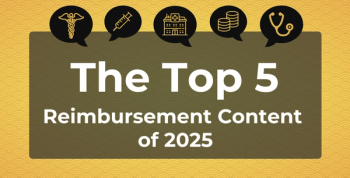
Decision-Making Model Can Rule Out Low-Risk Patients for CRC
A simple, user-friendly decision-making model that used self-reported information was able to perform well in outpatient decision-making for patients with colorectal cancer (CRC).
Patients with
CRC is the second most common cancer in China and China is among the top country in the world when it comes to prevalence rate.2 Colonoscopy is the best method of detection for CRC but is not covered for all. Decision-making models can help to properly allocate the resources for outpatient endoscopy. This study aimed to develop a decision-making model that self-reported symptoms to compare with Asia-Pacific Colorectal Screening (APCS) scoring system to use for outpatient doctors.
This study included building the model, internal validation, external validation, and application of the model. Batches of symptomatic outpatient cases were enrolled from 2017 to January 2022 and all patients came from 7 hospitals in China. Patients were included if they were symptomatic outpatients, had informed consent, and had a colorectal disease diagnosis due to a previous colonoscopy. Patients with any contraindications to colonoscopy, were pregnant, were asymptomatic, and had cardiopulmonary insufficiency.
All patients completed a questionnaire that included 60 symptoms and risk factors that they could report. The scoring system was compared with the APCS, which includes information on age, gender, family history of CRC, and self-reported diabetes and smoking. Patients were considered low risk if they had a score of 0 to 2 and high risk if they had a score of 3 to 6. Patients also received a colonoscopy. The test underwent internal validation before also being tested for external validation and doctors were evaluated for process of use and influence on the final diagnosis.
There were 2916 patients who were symptomatic that were included in this study, of which 1.71% were diagnosed with CRC. A total of 76% of the patients diagnosed with CRC were aged more than 50 years at a mean (SD) age of 62 (12.62) years and 52% of them were women. Sex, body mass index (BMI), family history of CRC, personal history of CRC, exercise level, and drinking and smoking history were significantly different between the patients without CRC and those who were diagnosed with CRC. Patients with CRC were primarily older, female, had a BMI higher than 25, and were less likely to exercise.
The developed model had an area under receiving operator characteristic (AUROC) of 0.8574 (95% CI, 0.8006-0.9142) as well as a sensitivity of 78.6% and a specificity of 79.2%. The AUROC of this model was 0.6682 (95% CI, 0.5968-7396) better compared with the APCS scoring system.
Clinical application of the model was evaluated through the lens of the user and clinical practicality. There were 2390 questionnaires collected for the user experience from patients in the outpatient department. A total of 99.9% of the patients believed that the questionnaire was satisfactory and had no problem understanding the form. All 17 investigators who participated in model scoring also believed the nomogram was easy to understand.
There were 860 patients who received a colonoscopy and 1.63% was found to be the detection rate. The model prediction was consistent with clinical decisions from doctors, with a consistency ratio of 81.4%. The decision-making model was also able to detect 100% of the outpatient cases with CRC that were in the high-risk group. A total of 124 patients were considered low risk and all 124 were not diagnosed with CRC after a colonoscopy.
There were some limitations to this study. The test was designed to be optimal in its strategy for CRC. The observation period was short and could be lengthened due to the lower incidence of CRC. This model cannot replace clinical interviews with physicians due to other colorectal diseases increasing in incidence, some of which can lead to CRC and are indications for colonoscopy. Other cohort studies that evaluate the long-term uses of the model should be used in the future.
The decision-making model for CRC could help to reduce the number of colonoscopies done due to its ability to identify patients at a lower risk of CRC. The model had good performance compared with the APCS and was primarily good in outpatient decision-making and clinical utility.
References
- Luan Z, Liu F, Zhang L, et al. A self-reported symptom-based decision-making model helps to rule out outpatient cases at low risk for CRC before colonoscopy. Heliyon. 2024;10:e33619. doi:10.1016/j.heliyon.2024.e33619
- Colorectal cancer statistics. World Cancer Research Fund International. 2023. Accessed August 6, 2024. https://www.wcrf.org/cancer-trends/colorectal-cancer-statistics/
Newsletter
Stay ahead of policy, cost, and value—subscribe to AJMC for expert insights at the intersection of clinical care and health economics.








